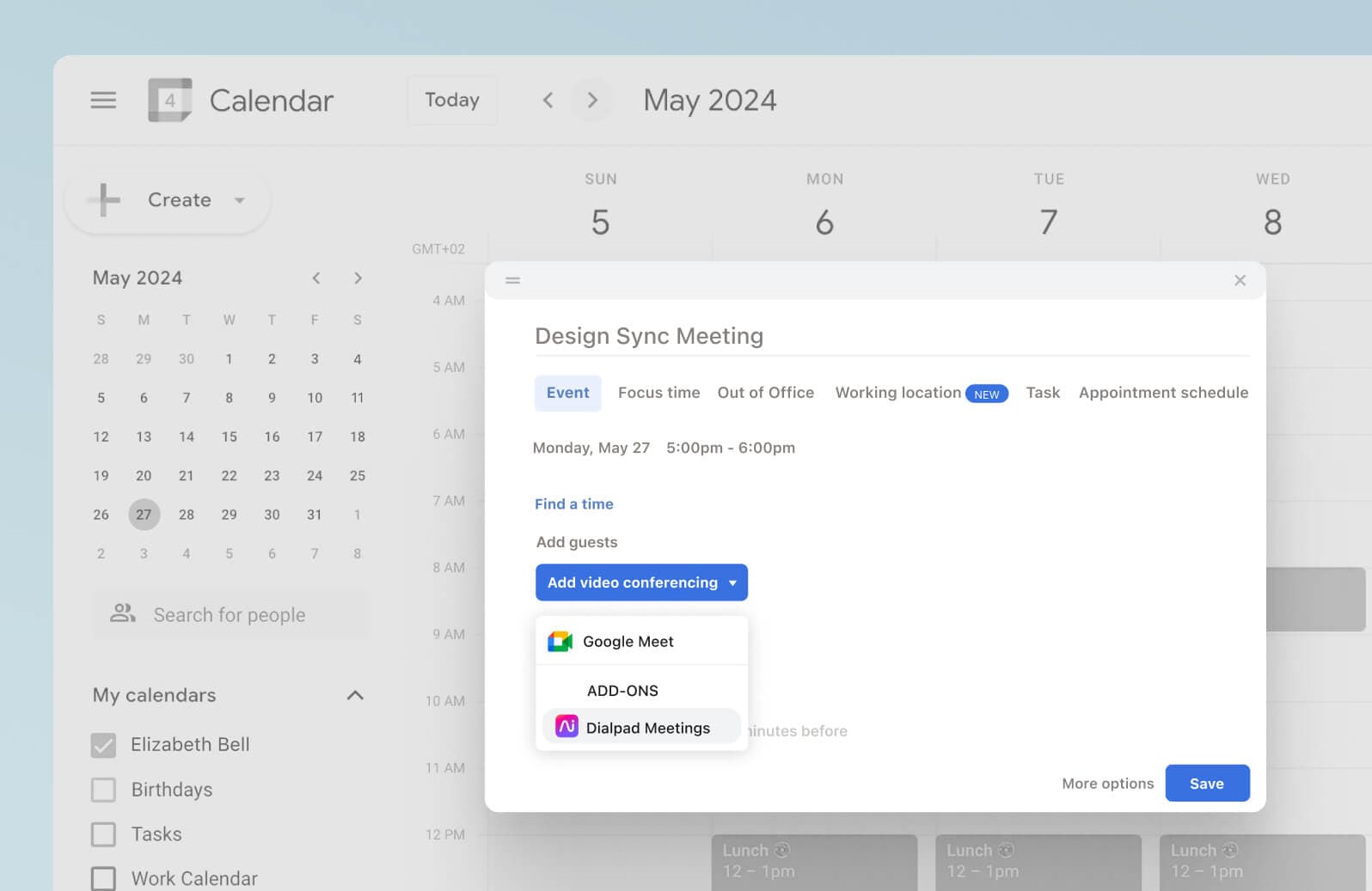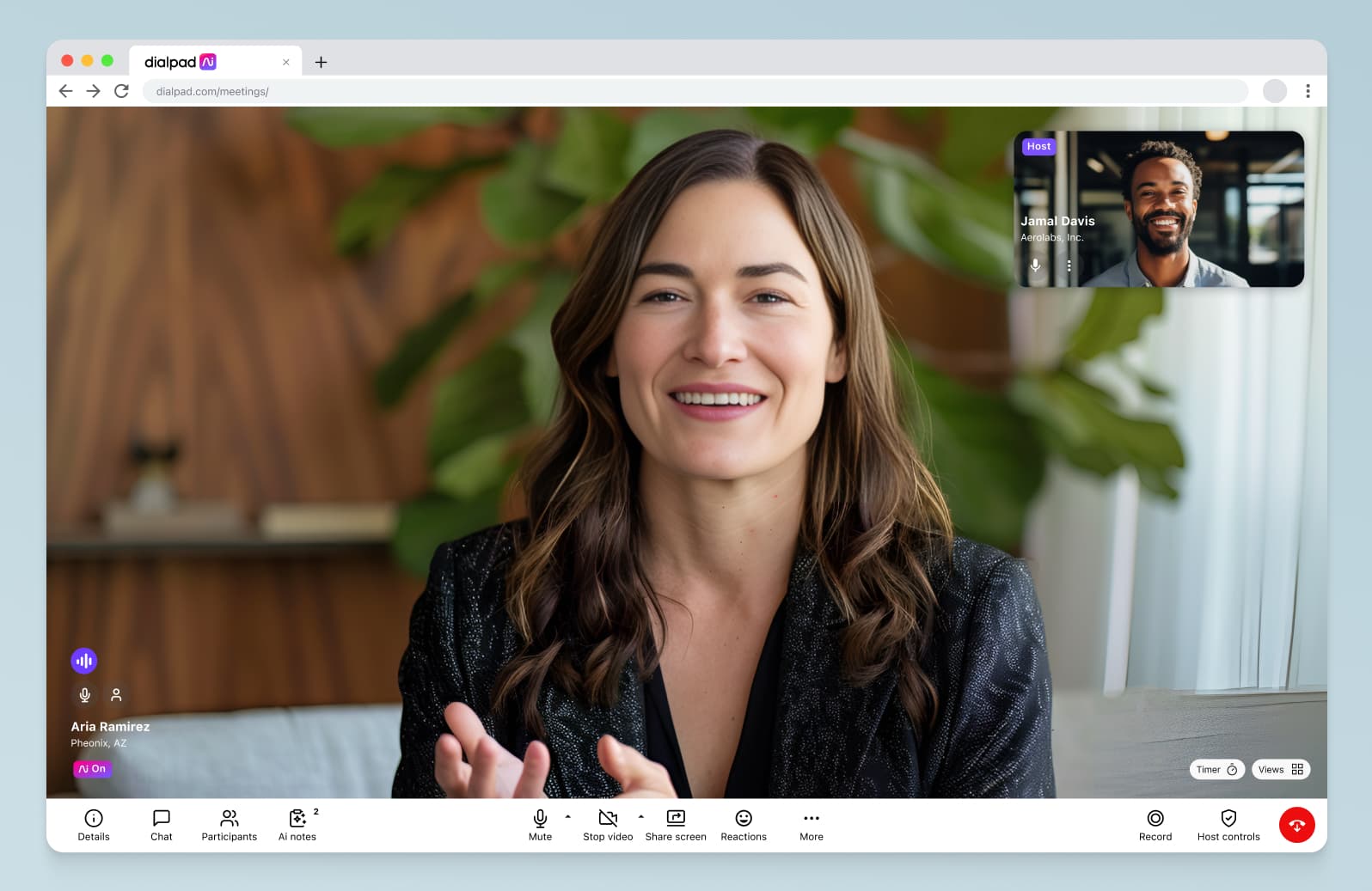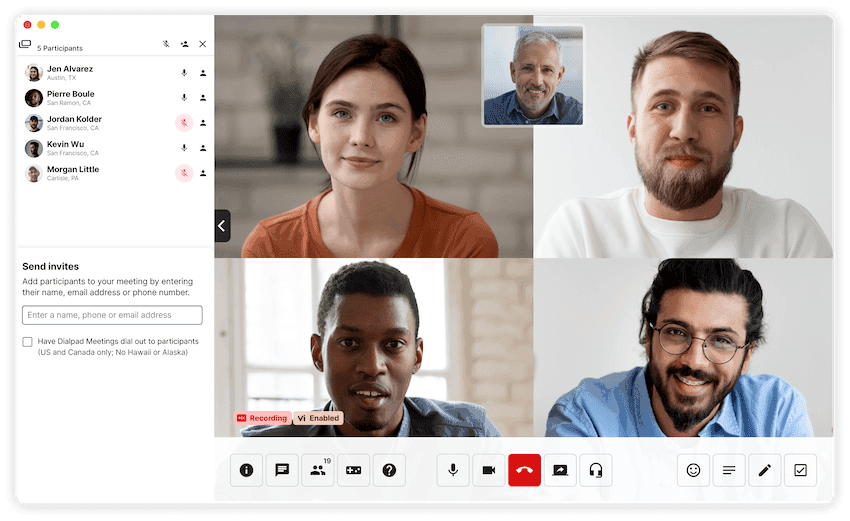How to craft the perfect email meeting invite [with 6 templates]

Director of Content

Tags
Share
Crafting the perfect email meeting invite—is it possible?
We write meeting invites every day, it seems, for almost every occasion.
There are the meeting invites for 1-on-1 catch-ups with your manager (or direct reports), invites for team weekly meetings, company-wide meetings… And then there are the meetings with external folks like clients and prospects.
So how do you create an effective meeting invite that prepares everyone for the meeting and gives them the context they need to have a productive session together?
Having created probably a couple hundred meeting invites before, I’ll walk you through my process for writing the perfect(-ish) email meeting invite (with six templates) in this blog.
Why a good meeting invite is important
There are two main reasons to pay attention to a meeting invite if you’re the one hosting this meeting.
It keeps everyone on the same page
A well-crafted calendar invite will give the attendees everything they need to know—time, conference room, meeting date, what's on the agenda, and so on.
It holds everyone accountable
With all the information sent ahead of time, attendees can prepare in advance for any discussions—and have no excuses for not doing so.
Your scheduled meeting invitation is also the perfect opportunity to set goals and expectations before the meeting, so everyone is prepared in advance.
3 internal meeting invite templates
Now, let’s look at some templates for the three most common types of internal meetings.
The one-on-one invite
The one-on-one invite is essential for any meeting that calls for two people to discuss sensitive information or projects very specific to those two people.
This is most frequently a meeting between a manager and a direct report. For these one-on-one calendar invites, make it really clear what the meeting is about and what your goals are, right in the meeting description:
Hi [Name],
Hope you're doing well.
Just a reminder that our meeting to discuss [subject] is later this week. Can't wait to hear your thoughts on [x], and please bring any questions you have about [y].
Remember to review [z] before the meeting so we can make a final decision.
See you Thursday!
[Signature]
The presentation invite
Presentations are notorious for going long. You can make sure your meeting runs smoothly by detailing a meeting agenda in your meeting invite. This will let your attendees know what to expect, what to prepare, and roughly how long the presentation will last.
Hi [Names],
Please join me for a meeting on [day and date] at [time] to discuss [topic].
Our purpose at this meeting will be to [goal]. Here's a quick look at the schedule:
Talking point #1 (approx. time)
Talking point #2 (approx. time)
Talking point #3 (approx. time)
If you have any questions or comments about the schedule or any technology you need to bring, please let me know.
Thank you,
[Signature]
Quick note: It really helps if your communications platform integrates with your email and calendar tool. For example, we use Google Calendar and Dialpad integrates with it to automatically generate a video meeting link when you create a meeting invite.
All you have to do is hit Dialpad Meetings under Add-ons:

The team meeting
We have a few team meetings a week, and in my experience, these meeting invites are especially important because for us, team meetings are very action and strategy-oriented. Everyone has a role to play, and even though our meetings are still pretty informal—this is not time I want us to waste.
Any asks to provide an update or fill out some information in a deck should be clearly laid out in your meeting invite so that people can prepare for the meeting.
For example:
Hi team,
It's that time again!
This meeting will focus on discussing [x]. Bring any questions you have, as there'll be [amount of time] to cover those, and be ready to chat through the following:
Talking point 1
Talking point 2
[insert a link to a deck if needed]
See you then,
[Signature]
And since you probably send these emails often for recurring meetings, think of ways to streamline the process. Save your email template and adjust accordingly. (With Dialpad you can create a contact group and easily send calendar invites when you need to.)
👀 What's your collaboration style?
Are you an Architect or a Spark? Or maybe you're a Bridge. Find out which one you are in this infographic!
3 external meeting invites
Now you might be wondering, “Wait, Grace, you’re in Marketing, not Sales. Why would you send external meeting invites?”
Well, it turns out, we do a ton of meetings with external stakeholders too, whether it’s outreach for guest posting or inviting subject matter experts to be featured in our content.
And these templates have helped me get a few responses in the past.
The cold outreach meeting
There's no easy way to reach out and say "Hey, do you want to have a meeting?" to someone you've never met before.
That’s why this one is probably the meeting invite template I use the least. If I’m reaching out to someone, I always try to make it a warm outreach attempt.
That being said, sometimes I’ve just had to do cold outreach to say, see if someone wants to be featured in our content.
And there are a few things you can do to improve your chances that the recipient opens the email and sends a response.
First, have a great subject line. I don’t try to get too cute here—make it really clear to them (you’re a stranger, after all) why you’re reaching out
A good subject line is hands down the most important thing when you start writing a cold meeting invite because if it doesn’t entice someone to open your email, well, that’s the end of that road.
Next, keep things brief. Keep in mind the value of the recipient's time, and don't waste it. Deliver in your message what was highlighted in the email. So if you asked for a meeting, propose where and when with firm dates and times—but stay open of course, in case they’re very busy. (They’re probably very busy.)
Hi [name],
[Optional: Explain how you got their contact information: talked to a colleague, saw their company online, etc.].
I’m reaching out because [your good reason]. All we’d need is [amount of time], and [describe the benefits to the person—why should they say yes?]
Can we set up a quick call on [date] at [time]? Alternatively, I could also do [date] at [time].
Thank you for your time,
[Signature]
Don't forget to incorporate email signature generators into your email routine, as a valuable addition to meeting invites, not only reinforces your professionalism but also simplifies the process of sharing vital contact information. Similarly, using online signature tools can elevate the functionality of your digital setup, ensuring that essential documents are signed and secured promptly. This subtle yet impactful touch can make your emails stand out, leaving a lasting impression on your meeting invitees and enhancing your overall brand image.
The warm outreach meeting
A warm outreach will be with someone you've already interacted with or that has expressed interest in you. Maybe their colleague referred them to you.
This familiarity makes it a bit easier to connect through email—but you should still get right to the point and keep things brief.
Hello [name],
I’m reaching out because [Your mutual connection’s name] suggested that you’d be a good fit for [whatever your ask is].
OR
I’m reaching out because I saw you at [where did you see or hear about this person from?]
I’d love to chat more with you about [what you want to meet with them about]. Would you be interested in chatting on [date] at [time]?
Looking forward to your reply,
[Signature]
The client catch-up
You can add more of a personal touch when inviting a client to a catch-up meeting since you have an established relationship. Keep it short and close the email with specific times and dates to meet, and when you'd like a response.
Hi [name],
It's been a while since we met in person—let's change that! I'll be in your area from [date range], and I'd love to grab lunch and show you some of the new product features we've been working on.
Does [date] at [time] work for you? I can also do [date] and [time]. Let me know what's best for your schedule.
I look forward to seeing you and hearing about your big promotion—congrats!
Talk to you soon,
[Signature]
What makes up the perfect email meeting invite?
A clear and concise subject line
Keep the subject line to the point and tailor the tone to your recipient.
Include specific details (as in not just [Your name] + [Their name]).
Here are some examples:
"Yearly Performance Review (Bit of Prep Needed)"
"Huddle to nail down marketing strategy + update on team retreat”
"Mobile App Demo + Rollout Discussion, Breakfast Included(!)"
A meeting link
There are a lot of virtual meeting platforms out there that you might be using. The meeting link should be in the email—but ideally, people shouldn’t have to download an app to join the meeting.
This is especially important if you’re having lots of meetings with people outside your company, like prospects and clients. They likely won’t want to download apps on their computers or mobile devices just to meet with you.
That’s one nice thing about Dialpad. It automatically generates the meeting link in the invite, and your attendees can just click the link to join your meeting from a web browser:

Specified time zone(s)
I’ve got people on my team in a few time zones, and if you have clients and prospects in different time zones, then it’s even more important to specify your meeting time zone.
Good news is that most email and meeting platforms account for time zone differences when you create the meeting request. For example, creating a Google Calendar event within your local time zone will automatically adjust for the other participants' time zones.
Another neat thing in Dialpad is the dial-out feature, which automatically “dials out” to your attendees when a meeting starts (in case people forget there’s a meeting—which happens more often than you think):

Agenda and expectations
Surprises are great for birthday parties and holiday gifts. Not so much for meetings. Don't try to surprise your attendees with your meeting agenda and expectations unless you'll be handing out free iPhones at the end.
I generally try to keep the meeting invitation tidy and list the agenda items in a few bullet points.
Fun fact: There’s a meeting countdown feature in Dialpad that tells you when the end time of your meeting is coming up. (Yet another perk of the Google Calendar and Microsoft 365 integration.)
This way, everyone can see that it’s time to wrap things up—it’s really helped us respect each other’s time, since meetings tend to run over:

5 tips for writing effective meeting invites
1. Don’t make it too long
Remember your objective here: you're just inviting people to a meeting. While it can be tempting to include lots of details and tidbits, keep it to the basics and need-to-know information.
Save the good stuff for the meeting.
2. Put the most valuable and important parts first
As a writer, it pains me to say this, but people often don’t read “the whole thing.” Whether it’s a blog post, a web page, or an email, they just usually don’t.
So, steal this method from journalism: put your most important information first, then the next most important information, and finish with the details or context. (AKA. The inverted pyramid tactic of writing.)
Here's an example:
Hey team,
Let’s chat about a new marketing plan for the next quarter. Please bring some ideas and be prepared to chat through them together. 👈 The must-knows are right at the top.
If we have time, we’ll also review how things went this quarter. If we don’t, that’s fine and we’ll have a separate review meeting. 👈 Not must-knows—just helpful context.
See you then!
[Signature]
That way, even if they don’t read the whole thing, they're still more likely to have absorbed the most important information.
3. Set a deadline for your invitees to respond
Like any event, you want an idea of how many people will be attending. This helps you plan for things like timing and agenda topics.
To get accurate numbers with enough time to plan, include a firm RSVP by date in the calendar invitation. Both Gmail or Microsoft Outlook make this easy to do.
Side note: I don’t really think this is necessary for one-on-one meetings. This is more for larger group meetings where you do need to plan a bit more for presentations and such.
4. Use calls to action in subject lines to make people react faster
You've probably seen or maybe even used calls to action (CTAs) before. Start using them in your meeting invitation email subject lines to encourage people to respond.
Here are some examples:
Urgent: Attend an important meeting today at 2pm PST
Get some free coffee! (And a meeting)
I have an idea: Meet and discuss next Wednesday?
5. Make it easy for people to join the meeting
I mentioned this earlier, but if you have people conferencing into your virtual meeting, make it easy for them to join the meeting.
Setting up meetings right from your Outlook calendar or Gmail account saves a lot of time as the platforms sync your contacts and can streamline meeting details. And again, Dialpad has integrations with both Google Calendar and Outlook so you can automatically insert meeting links into event invites.
Create meeting invites that get responses with the right tools
Meeting invites don't have to be super tedious—they’re pretty much an essential part of our everyday work lives, and with the right tools and templates, they can be really quick and easy to draft up.
Have a good communications platform that integrates with your calendaring tools. It’ll help you plan, run, customize, and schedule meetings much more easily, no matter where you or your team is located.
Host and join video meetings with just a click, from anywhere.
Looking for a video meeting platform that unifies all your communications, including phone calls and messaging, into one? Book a product demo to see Dialpad in action, or take a self-guided interactive tour of the app on your own first!








